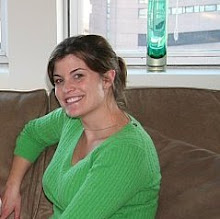Technology allows readers to represent texts in different modalities to enhance their understanding. Then go beyond the text to the outside world. Readers can connect with others to discuss the reading or present their responses to the reading to an authentic audience and receive feedback.
At the recent BLC Conference in Boston, I learned how some educators are using technology to teach reading. Sara B. Kajder, author of Bringing the Outside In, Visual Ways to Engage Reluctant Readers, spoke of using movie making software to have students demonstrate their thinking as they read. For example, a student would use the first voice track to record herself as she read the text. In a second voice track, she would state what she was thinking as she read certain sections of the text. The visual track would contain images of what she pictured as she read.
Kajder and other educators including Jim Wenzloff had students respond to their reading by making movie trailers about books. The students produced engaging multimedia presentations and presented them to authentic audiences online or in local libraries. Wenzoff showed this book trailer as an example: Number of the Stars book report.
Jim Wenzolff also uses technology to connect with readers with authors, experts, and other readers. For example, after his students read Night of Twisters, they interviewed a meteorologist from the National Weather Board. He also set up a blog where readers of Traders in Time could interact with author, Janie Lynn and other students.
Other educators who attended each session shared other ways they used technology to respond to reading. One teacher had the students write reviews in the form of podcasts. Another educator had her students write the next chapter of a novel using xtranormal.
When I return to school in September, I want to think about how I can use technology to enhance my students’ understanding of the text and link my students to the outside world. The ideas presented at the BLC have opened my eyes to new possibilities.


